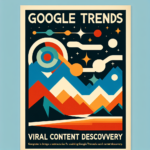Mastering Digital Marketing through Data
Did you know leveraging data can greatly improve your digital marketing performance? Modern marketing heavily relies on data-driven strategies to deliver personalized messages and improve user experiences. In this article, we’ll explore how data impacts digital marketing, from overall strategy to specific forms of content.
First, we’ll examine key concepts of data-driven marketing, looking at how data analysis enhances customer understanding and campaigning efforts. We’ll explore tools and technologies that aid in processing and interpreting data, as well as important metrics to assess your marketing performance.
In the next segment, we’ll go deeper into the role of data-driven predictions in marketing, explaining how statistical techniques and algorithms enable marketers to foresee customer behavior and adjust their efforts accordingly.
Finally, we’ll explore how effective content optimization can be achieved through data. We’ll explain the necessary steps for implementing this strategy and highlight some vital KPIs that show if your content optimization tactics are making a difference.
Are you excited to discover the power of data in digital marketing? Let’s get started!
Exploring Data-Driven Methods in Digital Marketing
Key Concepts of Data-Driven Marketing
Data-driven methods in digital marketing involve making decisions based on data analysis and interpretation. These methods enable marketers to tailor campaigns to individuals by understanding customer preferences and behaviors. Key concepts include:
– Customer Insights: Analyzing demographic, behavioral, and transactional data to understand customer interests.
– Personalization: Creating customized marketing messages or offers tailored to individual users.
– Automation: Streamlining processes by using algorithms to predict outcomes and automate marketing tasks.
Tools and Technologies for Data Analysis
Several tools and technologies assist marketers in analyzing data effectively. These tools help in collecting, processing, and interpreting vast amounts of data.
- Google Analytics: A platform for tracking and reporting website traffic.
- CRM Systems: Stores customer information and interaction history, helping create personalized experiences.
- Data Visualization Tools: Tools like Tableau or Power BI help visualize complex data for easier interpretation.
Metrics Used in Data-Driven Marketing
Understanding the right metrics is important in evaluating the performance of your marketing efforts. Important metrics include:
| Metric | Purpose |
|---|---|
| Click-Through Rate (CTR) | Measures the effectiveness of ad campaigns in driving traffic. |
| Conversion Rate | Lists potential customers who took the desired action compared to potential leads. |
| Customer Lifetime Value (CLV) | Estimates the total revenue a business can expect from a single customer account. |
Benefits of Data-Driven Methods
Applying data-driven methods offers several advantages that enhance your marketing strategy:
- Precision Targeting: More effective targeting based on actual customer data, leading to better engagement.
- Efficient Resource Allocation: Spending is directed towards high-performing strategies and channels.
- Improved ROI: Tracking performance continuously improves strategies, ensuring better returns on investment.
For more details, visit this Forbes article regarding data-driven decision making.
Challenges of Implementing Data-Driven Methods
Despite the advantages, there are challenges to implementing these methods:
– Data Privacy Concerns: Complying with regulations like GDPR can be complex but essential.
– Data Quality Issues: Inaccurate or incomplete data can lead to wrong insights.
– Integration Problems: Combining data from different sources can be challenging but necessary for a complete view.
Using data-driven methods wisely can significantly impact the effectiveness and efficiency of marketing strategies. The key is to manage challenges effectively while leveraging the vast potential of data analysis.
Unraveling Data-Driven Predictions
In digital marketing, data-driven predictions, also known as predictive modeling, use statistical techniques and algorithms to analyze existing data and predict future outcomes. This method has gained popularity because it helps marketers anticipate customer behavior, improve engagement, and optimize marketing efforts for better profitability.
The Power of Predictive Analytics
Predictive analytics, a key method for data-driven predictions, helps analyze current and historical facts to make predictions about future events. It combines data mining, modeling, machine learning, and artificial intelligence (AI) to analyze current data and make predictions.
For example, marketers can apply predictive analytics to analyze customer behavior, market trends, and business statistics to identify opportunities and risks. It’s indeed a powerful tool for marketers who capitalize on future trends instead of reacting to past events.
Types of Predictive Models Used in Digital Marketing
There are mainly three types of predictive models used in digital marketing:
- Classification models: These models predict categorical outcomes, like whether a customer will churn or not.
- Regression models: These predict numerical outcomes, such as the amount of revenue a marketing campaign will generate.
- Time series models: These predict changes over time, such as seasonal sales trends.
Applications of Data-Driven Predictions in Digital Marketing
Data-driven prediction has novel applications in digital marketing that can significantly improve marketing outcomes:
- Customer Segmentation: It allows marketers to group individuals based on their predicted behavior or preferences, improving the preciseness of targeting.
- Forecasting: Predicts future sales, market trends, or customer behaviors based on historical data and current market conditions.
- Risk Assessment: Identifies potential risks or challenges before they occur. For example, predicting which customers might churn can enable preemptive actions.
- Optimization: Optimizes marketing resource allocation and strategy by accurately predicting campaign performance.
Implementing Data-Driven Predictions: Critical Steps
Creating accurate data-driven predictions entails following important steps:
- Data Collection: Collecting high-quality, relevant data is essential for accurate predictions.
- Data Processing: This involves cleaning and transforming raw data into usable formats.
- Building the Predictive Model: Based on the data and business goal, the appropriate predictive model needs to be built.
- Testing the Model: Like any analytical model, ensure the prediction model is tested and refined over time.
- Deployment: The final step is deploying the model to start making predictions and implementing insights.
A real-world example of successful application of data-driven prediction is Spotify. Spotify takes listener data to predict what kind of music a user may want to listen to next, thereby personalizing the user interface and creating an enjoyable customer experience. For more details on Spotify’s data-driven approach, check out this insightful article on Built In.
Overcoming Challenges with Data-Driven Predictions in Digital Marketing
Even with its significant benefits, implementing data-driven predictions brings a fair share of challenges that need addressing:
- Data Quality: Poor data quality can result in inaccurate predictions. It’s crucial to ensure the collected data is relevant, accurate, and up to date.
- Technical Expertise: Implementing predictive models requires knowledgeable data scientists and digital marketers.
- Responsibility: Similar to general data privacy concerns, data-driven predictions must be used ethically and responsibly to maintain customer trust.
Addressing these challenges ensures the effective and responsible implementation of data-driven predictions in marketing strategies, maximizing its full potential.
Being aware of these challenges and implementing measures in advance can aid digital marketers in making the most of data-driven prediction’s full potential, thereby achieving comprehensive marketing success.
What Is Data-Driven Content Optimization?
Defining Data-Driven Content Optimization
Data-driven content optimization involves using data analysis to improve and personalize content, ensuring it meets audience needs and enhances engagement. It uses consumer insights to refine content, making it more effective in achieving business goals.
Steps to Implement Data-Driven Content Optimization
Implementing this strategy requires a systematic approach to ensure content aligns with audience preferences.
- Audience Research: Collecting and analyzing data on demographics, interests, and behaviors to understand what your audience values.
- Content Audit: Reviewing existing content to identify what works and what doesn’t, based on performance metrics like engagement and conversion rates.
- Content Creation: Using insights from data to create content that resonates with the target audience. This might include adjusting tone, format, or delivery method.
- Testing and Analysis: Employing A/B testing to determine what content variations perform best and analyzing the results for continuous improvement.
Key Performance Indicators (KPIs) for Content Optimization
Tracking the right KPIs can help assess the effectiveness of your content optimization efforts.
| KPI | Purpose |
|---|---|
| Engagement Rate | Measures user interaction with content, such as likes, shares, and comments. |
| Time on Page | Determines how long users spend on a page, indicating content relevance. |
| Conversion Rate | Tracks the percentage of users who complete a desired action, like filling out a form or making a purchase. |
Tools for Data-Driven Content Optimization
Several tools can assist marketers in refining their content based on data insights.
- SEO Tools: Platforms like SEMrush or Moz help optimize content for search engines by analyzing keywords and backlinks.
- Content Management Systems (CMS): Systems like WordPress can offer plugins for analytics and A/B testing to tailor content better.
- Social Media Analytics: Tools such as Buffer or Hootsuite analyze audience engagement across social platforms, guiding content strategies.
Applications of Data-Driven Content Optimization
This strategy is not limited to improving blog content but extends to various domains.
- Email Marketing: Tailoring email content based on user data increases open and click-through rates.
- Video Content: Using viewer engagement data to determine video length, style, and distribution platforms for maximum reach.
- Product Descriptions: Enhancing e-commerce content with data insights to improve conversion rates.
Overcoming Challenges in Data-Driven Content Optimization
While this strategy offers many benefits, there are challenges to be aware of:
- Data Overload: Managing and analyzing large volumes of data can be daunting. A focused approach targeting specific metrics is essential.
- Resource Constraints: Quality data analysis often requires specialized tools and skills that may be resource-intensive.
- Content Saturation: In attempting to continuously optimize content, there’s a risk of overwhelming audiences. Finding balance is crucial.
For further insights on the practical applications and benefits of data-driven content optimization, explore this article on Contently.
What Is Data-Driven Success?
Defining Data-Driven Success
Data-driven success involves making informed decisions within a business by utilizing quantitative and qualitative data. It’s about leveraging accurate, relevant data to drive improvements and achieve business objectives effectively. This practice is prevalent across various business functions, from marketing to operations, providing a strategic edge over instinct-based choices.
Components of Data-Driven Success
Successfully implementing data-driven strategies requires understanding and integrating several key components:
- Data Collection: Gathering diverse, high-quality data from multiple sources such as customer feedback, market research, and internal analytics.
- Data Analysis: Using statistical tools and methods to interpret data, identifying patterns, trends, and insights that inform business decisions.
- Data Integration: Seamlessly integrating data into existing business processes to ensure accessibility and practical application.
- Outcome Measurement: Developing and tracking KPIs (Key Performance Indicators) to measure the success of data-driven initiatives.
Tools and Technologies Supporting Data-Driven Success
Numerous technologies facilitate the seamless incorporation of data into business strategies:
- Business Intelligence (BI) Software: Tools like Microsoft Power BI and Tableau allow businesses to visualize data, making trends easier to interpret.
- Artificial Intelligence (AI) and Machine Learning (ML): These technologies automate data analysis, offering predictions and insights with greater precision.
- Data Management Platforms (DMP): These systems store and manage data from varied sources, aiding data organization and accessibility.
Applications of Data-Driven Success
Data-driven success extends its advantages into numerous business areas:
- Product Development: Using consumer data to guide design and development processes, ensuring products meet market demands.
- Customer Service: Personalizing interaction and support strategies based on customer behavior and feedback data.
- Financial Planning: Analyzing historical data to predict financial trends and optimize budgeting and forecasting.
- Supply Chain Management: Leveraging data for demand forecasting, inventory management, and logistics planning.
Benefits of Data-Driven Success
Organizations that successfully implement data-driven strategies see numerous benefits:
- Increased Efficiency: Data helps streamline processes by identifying redundant practices and optimizing resource allocation.
- Enhanced Decision-Making: Decisions grounded in data are more likely to lead to successful outcomes.
- Competitive Advantage: Data insights provide a strategic edge, allowing businesses to anticipate market trends and shifts.
Challenges in Achieving Data-Driven Success
While the benefits are substantial, hurdles must be addressed to achieve data-driven success:
- Data Privacy Concerns: Ensuring compliance with legal standards like GDPR to maintain trust and legality.
- Cultural Resistance: Shifting organizational culture towards data-driven mentality can be challenging.
- Technical Limitations: Understanding and leveraging advanced data tools and technologies may necessitate additional training or hiring.
For more insights into the key aspects of data-driven success, consider reading this Harvard Business Review article.
Conclusion: The Power of Data-Driven Digital Marketing
A thorough examination of data-driven methods in digital marketing entails understanding various aspects, from customer insights, personalization, automation to predictive modeling. This approach heightens the preciseness of marketing strategy, offering efficient resource allocation and improved ROI.
We explored data-driven content optimization, which uses consumer insights to create resonant, effective content. Pairing this with the metrics of click-through rate, conversion rate, and customer lifetime value, digital marketers can make sound business decisions.
We also reviewed the concept of data-driven success in overall business functioning. With the right data strategies, organizations can gain a competitive edge, enhance efficiency and support informed decision-making through data-driven insights.
Despite all these advantages, there are hurdles such as privacy concerns, technical expertise, and managing data overload. The key lies in handling these challenges carefully and leveraging data-driven approaches wisely.
Frequently Asked Questions – FAQs
What is data-driven digital marketing?
Data-driven digital marketing involves using data analysis and interpretation to fuel marketing decisions, supporting tailored and efficient marketing strategies.
How is predictive modeling used in data-driven digital marketing?
Predictive modeling, or data-driven predictions, uses statistical techniques to analyze existing data and predict future outcomes, helping anticipate customer behavior and optimize marketing efforts.
What are some key components of data-driven success?
Data collection, data analysis, data integration, and outcome measurement are crucial components of data-driven success.
What are the benefits of data-driven content optimization?
Data-driven content optimization can lead to improved engagement, personalized content that meets audience needs, and an overall more effective fulfillment of business goals.
What are the challenges in achieving data-driven success?
Challenges include data privacy concerns, cultural resistance to shifting towards data-driven mentality, and technical limitations such as understanding and leveraging advanced data tools.






